Redness of the labia in a girl. Inflammatory process of the external genitalia - vulvitis in girls: causes of development, methods of treatment and prevention of infection
Vulvitis is an inflammation of the female external genitalia due to injury or an infectious process. Vulvitis can affect the vestibule of the vagina, labia, clitoris, and the outer part of the urethra. The disease ranks first among all gynecological infections in girls 1-8 years old. It is about 65-70%.
Primary vulvitis in girls is more often due to anatomical features genitals. For long-term and recurrent vulvitis in younger age, in the future, menstrual irregularities and problems with reproduction may occur.
Causes

At birth, girls' genitals are sterile. Gradually, opportunistic microorganisms appear on their mucous membranes. At first, the vaginal environment has a slightly alkaline or neutral pH. There are no lactobacilli in the smear; there are leukocytes and mixed microflora. Lactobacilli appear around puberty. Gradually, the vaginal environment oxidizes and glycogen begins to be produced. It becomes similar in composition to the microflora of sexually mature women in girls with the advent of menstrual cycles.
The immediate causes of vulvitis are nonspecific or specific infections:
- viruses (adenovirus, influenza, papillomavirus);
- fungi;
- protozoa;
- chlamydia;
- gonococci.
Ways of transmission of infection:
- in newborns, infection can occur when passing through an infected birth canal;
- at a younger age, the everyday route predominates (in places of public use, in case of non-compliance with hygiene rules);
- in case of sexual experience in adolescents - sexually.
Vulvitis often occurs in the presence of helminthic infestations or penetration of foreign objects (grains of sand, insects, blades of grass) into the genitals.
Secondary vulvitis in girls develops as a result of the spread of infection into the vulva from other foci (tonsillitis, caries).
Fungal infection of the vulva occurs due to:
- taking antibiotics;
- endocrine disorders;
- weakening of the immune system.
When an allergic reaction occurs to certain irritants (fragrant detergents, sanitary pads, chocolate, citrus fruits), atopic vulvitis develops. It doesn't happen often.
The genital mucosa can be damaged by frequent, diligent washing with soap, wearing tight underwear, or improperly selected diapers.
Abnormalities of the genitals also predispose to vulvitis:
- absence of posterior commissure;
- abnormal development of the external genitalia;
- low location of the urethral opening.
Signs and symptoms
The symptoms of vulvitis in children are in many ways similar to other genital infections (colpitis, vulvovaginitis).

Signs of the disease:
- burning and itching;
- pain in the genital area, which becomes more intense when urinating;
- swelling and redness of the clitoris, labia, vulvar mucosa;
- Sometimes there are erosions and ulcers on the mucous membrane.
Vulvitis in girls is characterized by vaginal discharge (leucorrhoea). They can be different, depending on the type and cause of the disease. They are mostly clear, but can sometimes be purulent or bloody. If the cause of the disease is E. coli, the leucorrhoea has an unpleasant fecal odor and a greenish-yellow color. If the infection develops when the vulva is affected by staphylococci, they are viscous and yellow. Vulvitis of a fungal nature is accompanied by a cheesy, white discharge.
Sometimes the disease may be accompanied by general symptoms:
- temperature increase;
- enlarged lymph nodes;
- nervousness;
- sleep disturbance;
- irritability.
If vulvitis is caused by pinworms, girls' anal folds thicken and redden, abdominal pain appears, and appetite worsens.
When the disease becomes chronic, swelling and hyperemia become less pronounced, but itching and leucorrhoea persist. With relapses of vulvitis, complications may develop in the form of cystitis, cervical erosion, urethritis, and vaginal atresia.
Diagnostics
The disease can be diagnosed by a pediatrician. But a pediatric gynecologist must examine, observe and treat the child. He examines the genital organs, uses instrumental vaginoscopy and vulvoscopy.
To identify the causative agent of infection, laboratory diagnostic methods are prescribed:
- culture and microbiological examination of smears;
- scraping using PCR method;
- general analysis blood and urine;
- stool test for worms;
- scraping for enterobiasis;
- allergy tests.
A selection of effective treatment methods
Treatment of vulvitis in girls consists of a set of measures depending on the etiology of the infection.
Note! You can treat a child at home only if the disease is mild and without complications.
Nutrition and regimen

In case of an acute process, girls need to be provided with bed rest. During illness, you should change your diet. Reduce the intake of foods that promote the formation of acids and spices (fried foods, meat broths, smoked foods, pickled vegetables, sour fruits). You need to increase alkalizing foods in your diet (milk, fresh and boiled vegetables). If vulvitis is of an allergic nature, a hypoallergenic diet is indicated. It involves eliminating allergenic foods from the diet:
- nuts;
- eggs;
- citrus;
- chocolate;
After an acute period, to restore the microflora of the vagina and intestines, you can diversify the menu with fermented milk products.
Local therapy
It is indicated for the elimination of hyperemia and swelling of the genital organs, relieving the unpleasant symptoms of burning and itching. For this purpose, disinfectants are used in the form of baths, irrigations, and lotions.
Local antiseptics:
- Potassium permanganate solution (light pink);
- Chlorhexidine;
- Miramistin;
- Furacilin;
- Quinozol.
Herbal infusions:
- calendula;
- chamomile;
- sage;
- nettle;
- series;
- oak bark
At the address, read the instructions for using Ambrobene solution for inhalation.
Effectively treat inflamed areas with ointments:
- Tetracycline (after 8 years);
- Oletetrinovaya;
- Sangiviritin 1%;
- Erythromycin.
Apply the ointment carefully to previously washed and dry genitals. Long-term use of ointments is not recommended. If the inflammation does not go away, you need to show the child to a doctor to adjust the treatment.
If the disease is recurrent, estrogens (Folliculin, Estriol) are applied topically to accelerate reparative processes.
Systemic treatment
When the nature of vulvitis and its causative agent are determined, the doctor can prescribe medications for oral use.
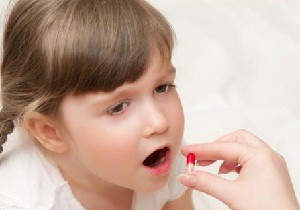
Candidiasis vulvitis is treated with antimycotic agents:
- Levorin;
- Fluconazole;
- Itraconazole
In parallel, areas of inflammation are treated locally with antifungal ointments (Clotrimazole, Decamine ointment).
If trichomonas are detected within 7-10 days, the following are prescribed:
- Metronidazole;
- Tinidazole;
- Ornidazole.
For prolonged trichomonas vulvitis with relapses, Solcotrichovac is administered intramuscularly (3 injections of ½ ml every 14 days). A second injection is carried out after a year - ½ ml once.
Gonococcal infection is treated with cephalosporin antibiotics:
- Cefatoxime;
- Cefix;
- Ceftriaxone.
In the presence of chlamydia and mycoplasmas, broad-spectrum antibiotics are prescribed:
- Sumamed;
- Doxycycline.
Vulvitis against the background of helminthic infestations begins to be treated with anthelmintic drugs:
- Wormil;
- Pyrantel;
- Levamisole;
- Albendazole.
Normalization of general condition
In case of vulvitis, it is necessary to take desensitizing agents to relieve swelling and itching:
- Suprastin;
- Tavegil;
- Zyrtec.

Enzymatic agents to normalize digestion:
- Baktisubtil;
- Creon;
- Wobenzym.
Immunomodulators to increase the body's protective functions:
- Immunal;
- Immunoflazid.
Folk remedies and recipes
Traditional medicine methods can be highly effective in treating vulvitis in girls. Recipes:
- Infuse 1 spoon of St. John's wort in 200 ml of boiling water for 1 hour and strain. Take 50 ml orally three times a day.
- Pour 1 spoon of dried viburnum flowers into a glass of water. Leave in a water bath for 10 minutes. Filter and drink 1 spoon three times a day.
- To relieve itching and burning, externally use baths and washes with a decoction of chamomile or oak bark (2 spoons per 1 liter of water).
Prevention measures
Preventive measures against this disease should be based on careful care of the genital organs of girls and instilling the rules of hygiene with early years:

- For infants, change nappies and nappies immediately after soiling.
- After each bowel movement, wash the perineum from front to back.
- Wash underwear with a hypoallergenic detergent and rinse it well.
- Change panties twice a day.
- Soap should not be used to wash the perineum more than once a day. Its pH should be neutral.
- Linen should be made from natural fabrics that do not contain aggressive dyes.
- Do not use aromatic oils, powders, creams.
- Have separate hygiene items (washcloth, towel).
It is better to prevent any disease than to spend great efforts on its treatment. Vulvitis in girls often occurs due to improper care of the genitals. Therefore, from an early age, parents should pay great attention to the hygiene of the child, promptly identify infections and treat them. This will help avoid unpleasant consequences for women's health in the future.
Video. Dr. Komarovsky about the causes of vulvitis and vulvovaginitis in girls:
The causes of vulvitis in infants are due to the physiological characteristics of the structure of the genital organs of girls. They are sterile. And only a week after birth, microflora begins to appear on the mucous membrane. In the first year of a baby’s life, the pH of the vagina is slightly alkaline or neutral.
So, what can cause vulvitis in newborn girls and how does it manifest itself? The main reason for the appearance of this disease in infancy is:
- presence of infections;
- viruses;
- fungi;
- protozoa.
In a baby in the first year of life, a specific infection of the genital organs may appear due to non-compliance or incorrect adherence to the rules of intimate hygiene. Vulvitis can also be caused by the passage of the fetus through an infected birth canal. Vulvitis can be a consequence of helminthic infestation in an infant.
Also, the appearance of vulvitis in infancy can be promoted by:
- the presence of diaper rash leading to diaper dermatitis;
- allergic reactions to food, medications, detergents;
- mechanical damage to the mucous membranes of the genital organs.
Mycotic vulvitis occurs as a result of:
- antibiotic therapy for newborns;
- the presence of hypovitaminosis;
- damage by herpes and influenza viruses.
Allergic vulvitis is not common in children under one year of age. It is a consequence of using different types of soap that are not suitable for baby hygiene. Diaper dermatitis can also cause vulvitis in infants.
Due to the abnormal structure of the baby’s genital organs (no posterior commissure, low location of the urethra, abnormal development of the vaginal lips) and functional features. An important role in the appearance of vulvitis is played by constant wearing of diapers, tight clothing, and improper washing of the baby. Since the skin and mucous membrane of the genital organs of an infant is very delicate, frequent washing with soap can accidentally damage the integrity of the vaginal epithelium and reduce the natural immune barrier.
Symptoms
The first signs of this disease will be redness and swelling of the baby’s labia. Redness may spread to the area around the vagina and thighs. The disease is manifested by itching and burning, which can intensify with urination and movement. The baby will often cry and express obvious anxiety, worsening at the time of urination.
The presence of vulvitis in a newborn can be determined by the appearance of specific discharge that is pathological in nature (bloody, purulent, yellow-green or yellow in color).
The main symptoms of vulvitis in a newborn may be:
- temperature increase;
- swollen lymph nodes;
- irritability, tearfulness;
- the quality of sleep deteriorates.
If the disease has become chronic, then this course is characterized by itching and specific discharge.
Classification of vulvitis in newborns. Vulvitis in a newborn can be:
- Acute (from the first days of life to 1 month).
- Subacute (from 1 month to 3 months).
- Chronic (from 3 months).
Depending on the cause of vulvitis, there may be:
- Infectious. Most often, these include inflammation caused by the proliferation of pathogenic microflora.
- Non-infectious. Diagnosis of vulvitis in a newborn
To diagnose vulvitis in an infant, it is necessary to obtain a complete medical history. Then, after examining the baby, the doctor prescribes tests. To make an accurate diagnosis it is necessary:
- have your urine tested for infection;
- do a general blood test to identify other diseases that reduce the body’s immunity and resistance;
- take a smear for bacterial culture to determine the causative agent of this disease;
- feces for identifying worms.
Also a common research method is not only bacterial culture, but also culture culture. This will determine the body's sensitivity to antibiotics.
Complications
With advanced vulvitis, the following complications may occur:
- The appearance of ulcers on the external and internal genital organs of the baby.
- Spread of hyperemia to the area around the vagina, groin, thighs.
- Vulvovaginitis may occur.
Other consequences of this disease are:
- Fusion of the labia, which will lead to difficulty urinating.
- In the absence of timely treatment, infertility may develop.
- If not treated correctly, vulvitis will become chronic. And it will make itself felt quite often, bringing discomfort to the child and his parents.
- Due to the frequent recurrence of vulvitis, scanty discharge will appear, swelling of the labia will occur, accompanied by severe itching, enlargement sebaceous glands, burning of the vaginal mucosa.
- The appearance of ulcers and erosions. After they pass, deformation of the genital organs may appear.
Treatment
What can you do
You should not treat vulvitis on your own. Treatment should be comprehensive and aimed at eliminating inflammatory processes and the factors that caused them.
It is necessary to pay great attention to the hygiene of the baby’s external genitalia. You can take frequent baths with herbal decoctions. The use of special antiseptics when washing the baby.
What does a doctor do
Based on the examination and medical history, the doctor prescribes tests and treatment. It includes treatment of the external genitalia with antiseptics. For severe vulvitis, antibiotics may be prescribed. If this disease was caused by pinworms, anthelmintic drugs are prescribed. For bacterial vulvitis, antibacterial drugs are prescribed medicines, with fungal - antifungal drugs. To maintain the body and increase resistance, the doctor may prescribe vitamins. For the best effect in treatment, the specialist will refer you to ultraviolet radiation.
Prevention
The main preventive measures include:
- Compliance with the rules of personal hygiene of the baby.
- Daily, but not frequent, washing of the baby.
- Proper washing involves washing from front to back. This is necessary to prevent bacteria from entering the intestines.
- Treat common diseases in a timely manner.
- Eliminate foci of chronic infections.
- Timely deworming.
- Compliance with hygiene rules by both parents of the baby.
- Baby cleansers should contain a neutral pH.
- If there are two girls in a family, then each should have its own personal hygiene items.
Intimate hygiene for babies: caring for girls
A woman's reproductive health largely depends on how the girl was cared for in childhood. Gynecologists believe that little ladies could avoid many diseases in the future if their parents took a responsible approach to sexual hygiene. Caring for the genital organs of girls is more complex than that of boys, and in order to properly carry out hygiene procedures, as well as know when you need to see a doctor, listen to our advice. And one more thing: do not listen to the stories and advice of other mothers and your friends, as their daughters may have completely different problems.
A little anatomy
In girls, the distance from the entrance to the vagina to the anus is small, so intestinal microorganisms, if washing rules are not followed, easily enter the vagina, causing inflammation.
In addition, babies have a wide and short urethra (urethra), the external opening of which is open and also more accessible to infection.
The vaginal microflora in girls is significantly different from that in women and has a different pH value (an indicator of acid-base balance); Before puberty, babies do not have lactic acid bacteria in the vagina that protect against infection, so the only protection should be proper care intimate places. For the same reasons, medications and treatment methods for women (suppositories and douching) are not suitable for girls.
And although the baby has important anti-infective barriers (narrow entrance to the vagina, the presence of a hymen), the genitals, due to anatomical and physiological characteristics, until puberty (at this age estrogen begins to be produced, which supports protective microflora and stimulates local immunity in the vagina) have low resistance to various types of infections and, therefore, require especially careful but thorough care.
Intimate problems
In the first days after birth, vernix lubricant may accumulate in the folds between the labia, which will serve as a substrate for the proliferation of pathogenic bacteria, so it must be removed. Using a cotton swab or pad moistened with boiled water, carefully wash all the folds between the labia from front to back. If the lubricant is not completely removed, moisten a cotton swab with sterile vegetable oil (boil olive or sunflower oil for 15-20 minutes in a water bath) and use it to remove lubricant from all folds of the genital slit, also from front to back.
Redness in the area of the external genitalia may indicate an infection that migrated to the baby from the mother while passing through the birth canal. If a genitourinary infection or thrush is not treated by the end of pregnancy, then during childbirth the baby will receive a fungal or bacterial infection instead of beneficial microorganisms. In addition, redness and itching of the external genitalia can be one of the manifestations of allergic diathesis.
Synechiae are adhesions between the labia, they are detected in the first days of life. This is a congenital malformation that can cause acute urinary retention, which necessarily requires consultation with a pediatric surgeon, since surgical intervention may be necessary. In more late age the resulting synechiae are most likely the result of a previous (or untreated) genital tract infection, as well as a congenital urinary tract infection. Yes, and the usual failure to comply with hygiene rules, improper washing, sometimes even irritation of the labia minora, caused by a wet diaper that was not replaced on time, can cause synechiae, because with inflammation, scars form and the edges of the labia minora grow together. Therefore, remember that even a small woman requires special care.
Leukocyturia is an increased content of leukocytes (blood cells) in the urine, which indicate an inflammatory process. Leukocytes can enter the urine not only from the urinary tract, but also from the vagina. In this case possible reason Leukocyturia can be a gynecological infection in the mother, but most often everything is explained by non-compliance with the rules of sexual hygiene.
On the 3-4th day of life, babies experience colorless or grayish-white vaginal discharge, sometimes it can be bloody - these are manifestations of the sexual crisis of newborns. The absence of vaginal discharge may indicate a continuous hymen or fusion of the labia (congenital synechiae). On the contrary, discharge from the genital tract not during the period of sexual crisis (that is, in girls older than one month of age) should alert attentive parents. For example, a baby who has had a respiratory viral infection may experience vaginal discharge, but most likely, after 5-7 days it will stop on its own. Girls who are predisposed to infections of the ENT organs (otitis, sinusitis, pharyngitis) can quite often have discharge from their genital tract, because the mucous membrane is the same everywhere.
You may notice a whitish coating in the fold between the labia minora and labia majora - this is accumulated secretion from the sebaceous glands - a completely normal and harmless phenomenon. Plaque often remains even after washing: you just need to remove it with a cotton swab moistened with sterilized vegetable oil from front to back.
Your daughter needs to consult a pediatric gynecologist if she has:
1. Synechia, both congenital and acquired (their treatment can be conservative and surgical).
2. Leukocyturia and bacteriuria.
3. Discharge from the genital tract not during a sexual crisis.
4. Redness of the skin or mucous membrane of the external genitalia.
5. Itching and burning of the genitals (you can guess about itching if the girl has become restless and often puts her hands in her diaper or panties).
6. Suspicion of abnormal structure of the genital organs.
Rules of sexual hygiene
Examine your daughter's genitals only with clean hands with short-cut nails and do not forget to wash your hands with soap before washing your baby.
It is advisable to wash the girl after each urination and always after each bowel movement under running water both from the tap and from a ladle in the direction from front to back. You need to hold the baby with her tummy up so that the water first washes the perineal area, and then the anus, flowing downwards. Before the age of one year, try to use only boiled water.
After bathing, washing, or changing a diaper, wipe all folds of the genital crevice with a cotton swab moistened with sterilized vegetable oil. Before bathing in the bath, be sure to wash your baby under running water.
In no case should you wash a girl after defecation by placing her in a basin or bathtub, since feces always contain a large number of microorganisms, which, if they enter the vagina, will quickly develop inflammation.
Do not use soap when washing your face: it dries out the skin, destroys the protective layer and can cause disruption of microbiocenosis. Use special pH-neutral baby soap once a week and, if necessary, after bowel movements. In this case, wash only the outer surfaces of the labia majora with soap, avoiding soap getting into the genital slit. Never use sponges and washcloths for washing - they injure delicate baby skin.
You should not use powder to treat the perineal area: the smallest particles of this product (and even more lumps) can scratch the delicate mucous membrane of the genital organs as a result of friction, especially under a diaper. You should absolutely not use powder if your baby is prone to skin irritations (atopic or diaper dermatitis, diaper rash and weeping).
Any moisturizer (milk, cream) is applied in a thin layer to the baby’s previously cleansed skin, i.e. after washing. In the genital area of girls, the cream is applied to the outer surface of the labia majora, around the anus and on the buttocks. Use moisturizers only as needed so as not to disturb the natural oil balance of your baby's skin.
Note to parents
Sleeping with the baby in the parent's bed saves the mother a lot of energy, especially when breastfeeding. In this case, it is unacceptable for parents to sleep without underwear: even if you do not have any diseases, foreign flora is not good for the child. Remember: the baby should lie on her own diaper, and not on a sheet shared with her parents, and, of course, not naked.
The girl should always wear rompers or panties; do not leave naked a baby who is actively crawling or already walking around the apartment, because it will still not be possible to keep the house completely sterile.
Do not allow your child to be naked in the sandbox or on the beach: be sure to wear a disposable diaper, thick panties or tight shorts. Children's underwear should only be made from natural materials, since synthetic fabric does not provide healthy condition and comfort of the skin and mucous membranes of the genital organs.
The baby needs her own soap, washcloth and towel. Always wash children's underwear separately from adults, and underwear - separately from suits and overalls.
However, all these recommendations also apply to males - it is no less important for boys to keep their intimate parts clean.
So, dear parents, be very careful about your baby’s sexual hygiene from birth. Hygiene rules you now know, follow them - it’s not difficult. And remember: the reproductive well-being of your daughter depends on your care, and you will enjoy your grandchildren in the future! Good luck!
Immediately after childbirth, the doctor examines the genitals born child. In boys, the size and shape of the penis, as well as the condition of the foreskin, are important. In girls, the emphasis is on the size of the labia minora and majora, the condition of the vagina and urinary canal.
Hygiene of the intimate area of newborns must be carried out correctly. Future reproductive ability and the absence of infections in the genitourinary system depend on this. Regardless of gender, the baby needs to be washed on time, diapers changed and air baths given daily for some time.
Examination of the intimate area: female gender
During examination, girls are found to have labia majora covering the labia minora. In girls born ahead of schedule, the small lips are visible, and the clitoris is large.
Often girls have swollen and red labia for some time after birth. The hymen can have different shapes.
It can be in the form of one continuous or ring-shaped film. The urinary tract in girls is located under the clitoris.
From birth, pathological changes in the development of the genital organs in girls can be detected.
- Underdevelopment (aplasia) or hypertrophy of the clitoris (increase in size).
- The junction of the labia minora.
- Closing the vaginal opening.
If discharge (blood, mucus) appears in the first days of life, the condition is associated with a hormonal crisis that the body is experiencing at this moment. It is enough that organ hygiene is observed.
Examination of the intimate area: male gender
Examination of the genital organs in boys must be done correctly. The focus is on the penis, foreskin, testicles and scrotum, frenulum.
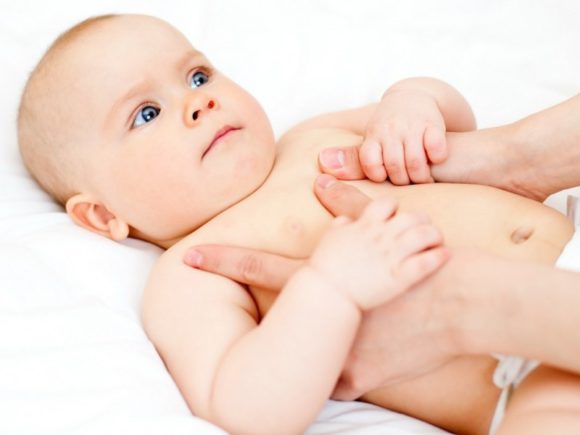
The penis in boys at birth measures between 2–2.5 cm.
The foreskin is often the same size as the glans, so it covers it. It happens that the foreskin is slightly larger than the head. In some cases, it may be smaller, so the head remains uncovered.
Often the head of the penis does not move completely outward, which is called physiological phimosis. Improper hygiene can lead to this condition. Therefore, the frenulum cannot be examined properly. It is recommended to specifically open the tip of the penis only if prescribed by a doctor. Such indications include difficulty urinating or inflammation of the foreskin.
The bridle should not be neglected, especially if it is short. The frenulum is a fold of skin that connects the foreskin to the glans and limits its movement. This way the penis remains partially covered.
A short frenulum is often a pathological phenomenon. A short frenulum brings pain and discomfort to the baby. If he cries and touches his penis all the time, you need to consult a specialist for advice. Parents may find that the penis is red, irritation has appeared, blood may even leak, and the foreskin is inactive.
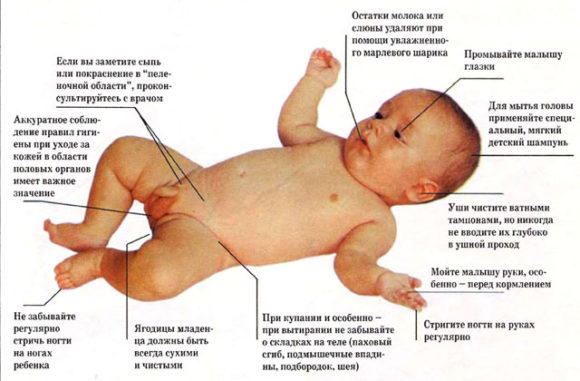
A short frenulum is most often a congenital pathology and is observed together with phimosis. Sometimes the cause may be an inflammatory disease of the genital organs. In this case, the member changes its structure. A short frenulum can occur due to injuries to the foreskin.
A short frenulum can be treated surgically. Local anesthesia is used. After the intervention, careful hygiene is required. If the short frenulum is not corrected in time, then problems in the intimate area will appear in the future.
To examine the penis and the opening of the urinary canal, you need to move the foreskin of the head down slightly. The channel opening is located in the center of the head and has different widths.
If the scrotum is large, this may indicate an inguinoscrotal hernia or testicular torsion. A disease such as hydrocele should also be excluded.
When a boy is born, the testicles should descend into the scrotum. In children born prematurely, they may be located in the inguinal canal. If during the examination the doctor does not find testicles in the scrotum, additional research methods are performed. During this study, the specialist can lower the testicles independently. If they are not found in the inguinal canal, a diagnosis of “non-descended testicles” is made. In the future, the child should be observed by an endocrinologist and urologist.
There are cases that when the testicles descend, they pull along a part of the peritoneum, which fills with fluid. This is testicular hydrocele, which can affect both sides or one. Dropsy causes an increase in the size of the scrotum.
![]()
If a boy's pussy is swollen, irritated, or the tip turns red, he needs to see a doctor immediately. Dropsy most often develops in newborn boys, less often in adulthood.
Congenital hydrocele of the testicles can occur due to inflammatory processes, trauma to the groin area, or testicular tumor. There are cases that dropsy develops after mumps or ARVI. In addition to the fact that dropsy is characterized by redness, swelling, body temperature rises, chills, and vomiting are observed.
Diapers cannot provoke a disease such as testicular hydrocele. This cannot happen because of others external factors. The trigger mechanism is always internal changes.
Slight swelling of the scrotum may indicate hormonal changes in the body to new conditions and is considered normal.
Caring for the intimate area in children
Boys' genitals, including the anus, need to be washed properly. Washing is carried out from the scrotum towards the anus. Diapers need to be changed regularly; it is recommended to go without it most of the time.
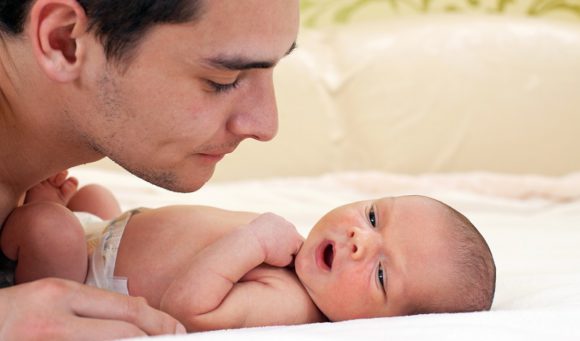
The penis should be washed carefully without retracting the foreskin. The tip is easily damaged, which can lead to wounds and cracks.
When healing occurs, scars will remain, which leads to a narrowing of the foreskin. You need to wash your penis with running water.
As the baby grows up, it begins to study its penis. He touches it, pulls it away. In this way, boys become familiar with their bodies. Nothing wrong with that.
If the penis bothers and brings pain to the child, then it can be treated with a weak solution of furatsilin. The gap between foreskin and head. After the procedure, you can drop a little baby oil on the tip of the penis. You need to change your diaper after every bowel movement. It should not constrain the penis.
Girls also need to be able to wash themselves properly. You need to wash it by manipulating from the front towards the anus. The anus is washed separately. Such hygiene will prevent infection from entering the vagina.
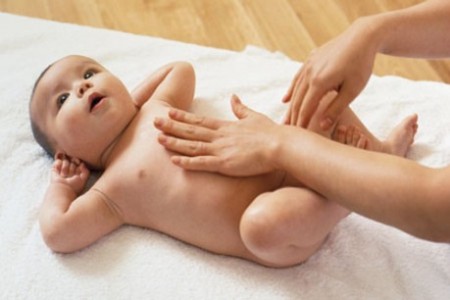
After washing is finished, the genitals need to be dried with a towel.
If the labia and anus are red, you can use powder. Sometimes irritation and redness are associated with an allergy to the material from which the diaper is made. In this case, you need to change the brand.
Changing diapers on time is another main rule that includes hygiene. If this condition is not met, then liquid feces often enter the vagina, causing irritation and various diseases. You need to change your diaper every 2-3 hours. The anus should be washed after each bowel movement.
You shouldn't wash your girls often, after every urination. This helps wash away beneficial microflora. You only need to wash after the baby has pooped. You can only use soap once a week. Use it to wash only the outer labia. If girls' labia are red, a rash and irritation appear, you need to contact a pediatric gynecologist.
IN early age Hygiene is very important and must be done correctly. You must be able to bathe and wash your child correctly, depending on gender, and change diapers on time. Often an allergy may occur to the latter, in which case you need to change the company.









